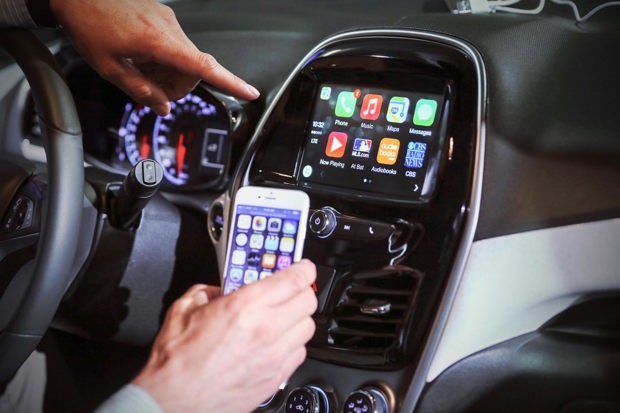Whether you leave your vehicle in the airport Park-n-Fly for a three-week vacation, park at a boat launch while you’re gone on a week-long fishing trip, or just leave it in your apartment parking lot for a month while you’re away for work, a few tips and tricks can help ensure you don’t return to any unwelcome surprises.
After all – parking a vehicle for an extended period of time in an unsupervised location has its risks: from break-ins to vandalism to flat tires to dead batteries. Below, we’ll look at a few tips and tricks to help make sure your ride stays where you leave it, and is good to go when you return.
Tip 1: Park like a pro

If you park in an indoor garage, consider backing your ride right up against a wall, leaving just an inch to spare, and thereby making it difficult for would-be thieves to access your trunk or tailgate. Parking in a well-lit, high-traffic area can help discourage theft or vandalism, too. If feasible, consider emptying your glove box, centre console, and trunk of unnecessary items before leaving on your trip. The goal is to leave your car as empty as possible while it’s parked. Open the glove box and centre console storage bin before you leave your ride, and if you’ve got an SUV or crossover with a cargo area that’s visible from outside, be sure it’s empty, and that you leave the cargo cover off. Reason? Car thieves are typically creatures of opportunity and avid window shoppers. If you clearly showcase the total emptiness of your car’s cabin and storage facilities, it’s more likely that they’ll move on to the next vehicle.
Pro tip
This is not a tip for everyone, but it’s done me well. After totally emptying your cabin and storage facilities and showing them off, consider leaving your ride unlocked, too.
This way, if a car thief really, really wants something like your stereo head-unit, they won’t even have to smash your window – which will likely be pricier to replace.
Tip 2: Immobilize it

Want to make absolutely certain nobody can hotwire or steal your ride? Just open the hood or fuse panel, and cripple your ride before you set off. Once parked safely, you’ll want to remove the relay or fuse that controls the vehicle’s starter motor, fuel pump, ECU, or some combination of the above. Ask a professional for assistance if you’re not sure, and note that this tip may not be needed, or advisable on certain vehicles – and especially newer ones.
If you’ve got an older ride, and especially one without an immobilizer or alarm system, simply pulling the starter motor fuse or engine computer relay, and bringing it with you, will prevent your ride from being started, even if it’s effectively hotwired.
Tip 3: Have juice and air at the ready

A portable power pack with a built-in air compressor can be had for about $125 at your favourite retailer, and is a great product to keep in your ride while it’ll be parked for an extended period. With the ability to boost a vehicle and to inflate tires, a portable power pack, like the Motomaster Eliminator 1400A Booster Pack, helps combat two of the most likely inconveniences you’ll encounter when returning you’re your ride after a few weeks: a dead battery, and a flat tire (or tires). Charge the power pack up before you leave, and leave it somewhere in your ride where it’ll be cool, and out of sight. If you return to a flat tire or dead battery, you’ll be moving again in no time.
Tip 4: Consider a solar battery tender

If a full-sized power pack and tire inflator isn’t in the cards, consider a solar-powered battery trickle-charger, which can keep your battery topped up while you’re away. These are smaller, cheaper and lighter than a portable power pack, making them more convenient. Just note that, as a trickle charger, they’re not designed to bring a dead battery back to life, but instead, intend to keep a healthy battery properly charged up. Hook it up as per the instructions, leave it on your dashboard, and park in the sun, to ensure you’ll come back to a battery that’s in tip-top shape.
Tip 5: Track a stolen car with an old cellular phone

If you’re really worried about vehicle theft, or if you just like gadgets and smartphone apps, consider using an old, unused smartphone with an app like Open GPS Tracker or Real-Time GPS Tracker. You’ll want to hide the smartphone with either app installed somewhere in your vehicle where it can be plugged in to permanent power, perhaps tucked behind a trim panel in the vehicle’s cargo area, after it’s plugged into a cargo-area-mounted power outlet.
Note that the smartphone running the app needs to be connected to a data network – and that you can use your regular smartphone instead of an old, unused one, if you’ll be leaving it behind for the duration of your trip.
With a GPS-tracking app running on a smartphone that’s hidden away within your ride, you can track the location of your vehicle from anywhere you’ve got a data connection. Some GPS-tracking apps can even automatically tweet the vehicle’s location, or text it to you, on a schedule. Others can send alerts automatically if the GPS location changes.
If your ride is stolen, and provided thieves haven’t found your hidden smartphone tracker, you’ll be able to find your stolen ride’s location, and provide it to the police, in a jiff.

